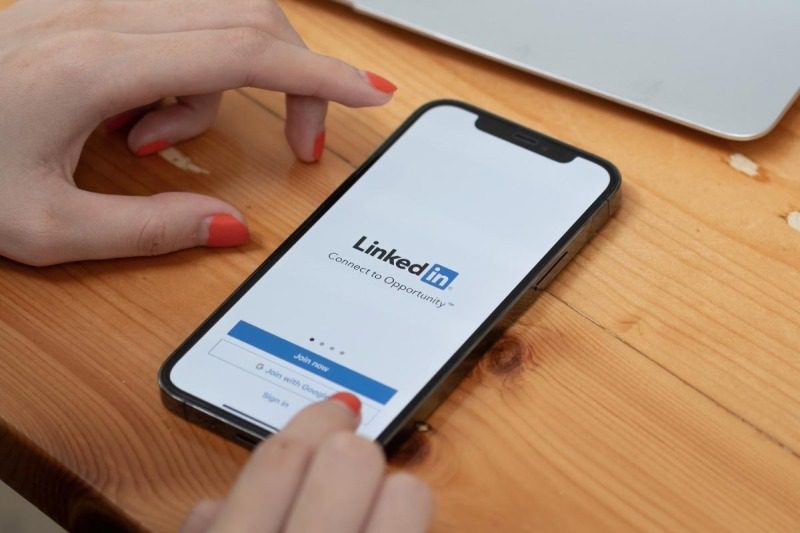
Are you wondering when to post a new job on LinkedIn? You might also wonder, “Do I need to update my LinkedIn profile when I start my new job?” If so, you’ve come to the right place.
Though you may be eager to share with the world the news of your new job, it’s usually best to wait until a few weeks or a month have passed before updating LinkedIn.
Nevertheless, there’s no hard and fast rule that says you can’t do it sooner. Whether you choose to wait or not is ultimately up to you.
In the early stages of a new job, you’re swamped with signing paperwork, getting familiar with new procedures and meeting colleagues.
You’ll also probably be learning the ways of your new company and role throughout the early stages of your new job. Taking your time to get to know your new workplace is your main priority.
By the end of the first few weeks you will have a clearer idea of what you are doing and what your job entails, which you can then include in your LinkedIn profile.
It’s also important to be 100% sure that you are the right candidate for the position. The more time you spend with a company, the better chance you have of knowing it all. Some jobs will not work out, so you might want to wait until you’re certain the job is for you.
If you are interested in submitting an updated job on your LinkedIn profile then this guide will help you to understand exactly that. This includes all the possible aspects that need to be considered before posting the update.
Table of Contents
Should I Wait Until The Probation Period Is Over?
In the beginning of your new role in a company, one of the most important things you need to consider is the probation period, as this is when you are most likely to be judged by others.
It is a time for you to stand out and show some of your best qualities to the employer so they enjoy what you do for them.
Depending on what job it is you have started, you need to think about whether it is worth putting it on your LinkedIn profile straight away.
In some cases, LinkedIn profiles are added to their new jobs only after passing their probationary period. This can range anywhere between three to six months, though it is standard to add the job after six months.
Adding the details of your current job to your profile before your probation period is over is still a good idea if you have accepted a new position elsewhere. The experience may be related to an area you are passionate about, but needed to gain experience before you can fully grasp it.
In the event that a job doesn’t work out, future employers may question why you only worked for three months at a company. Keeping that short period on your resume may not be a good idea.
Can I Update My LinkedIn With My New Job Without Consulting My Boss?
Whenever you are uncertain whether to update your LinkedIn profile with your new role, you can also ask your boss if it is appropriate to do so. This helps to make sure you are aware of the responsibilities of your role.
If you want to reveal information such as clients you’re working with or confidential details on your LinkedIn, you may have to check with them first.
There is no problem in talking to your boss about your LinkedIn profile, but it is essential that you know whether you need to do that or not.
Perhaps your boss thinks you are looking for other job opportunities, so you are using it as experience. If possible, you should try to avoid talking to your boss about it to avoid any misunderstanding.
If you know others in the industry, they might be pleased that you are interested in representing their company on LinkedIn because it attracts a much larger audience.
Is There Anything I Should Mention About My New Role?

Once you have added your new job to LinkedIn without any problems, then you should start thinking about what to include in your description for that role you have.
Include your job title and start date, along with a bulleted list of your main responsibilities and duties, alongside the company you work for.
If your boss and the company’s mission statement agree, you could even include any clients you’re working with. Add your contact information as well, along with any relevant details and links to products if you’re in sales or a customer-centric role.
You don’t have to update your LinkedIn headline to reflect your new role. In fact, many people are not aware of the need to change their headline.
You should use your headline to identify yourself, i.e. if you are a copywriter, say so in your headline. Please provide a short description of your new job role and title under your “work history” section.
These are just some of the essential things you need to be thinking about adding to your profile when updating your jobs on LinkedIn. You shouldn’t over think what your company might think if you put their company on your profile, no matter how long you have been there.
When Not To Update LinkedIn With Your New Job Role
If you’re changing jobs or leaving your employer, don’t update your LinkedIn profile before you’ve started the new job.
Before you begin, make sure you have covered all the bases, and that everything is in order. Rushing ahead is going to cause a lot of problems at the company and they probably won’t appreciate your attitude. This will show them that you are primarily concerned about yourself rather than the company.
You may want to announce your departure from your previous job on LinkedIn as well as announcing your new job.
Likewise, you could highlight what you learned or experienced, and thank your colleagues, which would present you in a positive light in the future.
This shows that you had respect for the company you previously worked for and are looking ahead to the future.
Frequently Asked Questions
During A Probationary Period, What Should You Expect?
During a probationary period, managers and employees can terminate the arrangement more easily should the employment not work out.
The probationary period can be used by managers to evaluate the worker’s performance, skills, capabilities, and engagement with the existing organizational culture.
An employee’s probationary period is there to determine whether they enjoy working for their employer and whether their capabilities and skills match the employer’s.
Why Is LinkedIn Such An Important Network?
For those on the job market, LinkedIn offers a lot of opportunities. It helps individuals connect with others, stay on top of businesses and events, and even handle their job sear
ch. Having a well-designed LinkedIn profile increases your chances of being discovered by companies searching for job candidates based on your skills and experience.
An excellent LinkedIn profile establishes your credibility as a potential employee and establishes your trustworthiness. Recruiters will always look at your profile when they contact you.
A great benefit of LinkedIn is that it helps you connect with people in your field of interest, so you can ask them for advice and find out what companies are in the field.
Summary
Now that you’ve read through all the things you will need to take into consideration before updating your LinkedIn profile, you should have a much better understanding of when you should update your LinkedIn profile.
Throughout this article, you will find information about the situations where it might not be feasible for you to update your LinkedIn profile.
The purpose is to give you a sense of what to expect before starting your new job and to help you be respectful.









